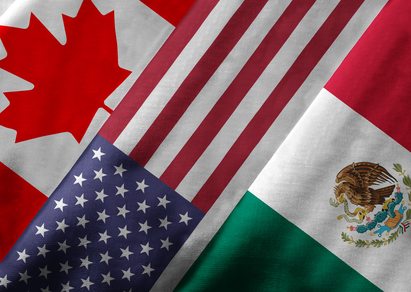What’s new with NAFTA negotiations?
Although, President Trump continues to threaten to pull out of NAFTA completely, Canada and Mexico officials believe it may be a negotiating tactic.

President Trump claims he is serious. We will see what comes out of the third set of NAFTA negotiations and discussions, which are taking place in Canada on September 23-27, 2017. In fact, the NASCO Continental Reunion will be the perfect place to follow up on NAFTA negotiations and learn more.
One proposal that Mexico and Canada oppose is the so-called sunset clause. The sunset clause states that the agreement should automatically terminate after five years unless all three countries agree to extend it to ensure the agreement can be regularly re-evaluated and improved.
Wilbur Ross told a forum organized by website Politico,
“(It) would force a systematic re-examination. You’d have a forum for trying to fix things.” [source]
All countries are trying to come to an agreement before the end of the year. And in United States’ case, here’s why:
1.) Next year, the U.S. fast-track law needs to be re-affirmed in Congress,
2.) the U.S. has congressional elections,
3.) Mexico has presidential elections and
4.) Canada has provincial elections. [source]
NAFTA Negotiations Timeline
Check out this helpful Timeline I found on Washington Fair Trade Coalition, reposted from CBS News:
2017
May: Countries are now consulting domestic actors as they prepare negotiating positions. Formal consultations are well underway in Mexico, and have just begun in the U.S.
June: Canada begins its formal consultations. The federal government will announce soon that it’s welcoming submissions from Canadians as it prepares its demands. Informal consultations with industry and labour groups have been happening for months. Freeland must also deliver a memorandum to cabinet, and receive a mandate to lead Canada’s negotiating team.

June 27: The United States holds a public hearing in Washington, where American stakeholders will share their ideas for the talks. The U.S. has a detailed consultation process that involves committees of the Senate, House of Representatives, and businesses.
July 17: The U.S. must publish, around this date, a detailed summary of its objectives for these negotiations. Under U.S. law, the document must appear on a publicly available website and be regularly updated thereafter.
Aug. 16: Negotiations can begin anytime after this date, which marks the end of the 90-day consultation period required by U.S. domestic law. At that point, American negotiators are finally allowed to sit with their foreign peers.
Fall: Mexican presidential primaries begin. It’s decision time for the man leading Mexico’s NAFTA negotiations. Foreign Minister Luis Videgaray will have to decide whether he intends to turn his focus to seeking the presidential nomination for his party, the ruling PRI.
Winter: The Mexican and U.S. governments have said they want negotiations wrapped up by the first quarter of 2018. Otherwise they risk affecting — and being affected by — Mexico’s presidential election. The current front-runner in the polls, Andres Manuel Lopez Obrador, is a left-wing, Trump-bashing NAFTA critic. Numerous observers have called this an impossible deadline.
2018
June 30, 2018: The current U.S. fast-track law expires. It could be extended three years — as long as the president requests it, and there is no resolution disavowing it from either the U.S. House or Senate. This law is considered a must for concluding any trade deal with the United States. Under this legislation, American lawmakers forgo their constitutional right to amend a treaty, and agree to pass or reject it with a simple majority vote.
July 1, 2018: Mexico holds its presidential election. After that, there’s a five-month lame-duck period as the incoming government waits to take office.
Nov. 6, 2018: U.S. holds its midterm elections. All the House of Representative seats, one-third of Senate seats, and state-level positions are up for grabs. Governing activity in Washington usually slows down beforehand.
Dec. 1, 2018: Inauguration Day for Mexico’s new president. If a deal hasn’t been reached under the previous government, NAFTA talks could pick up again under the new government as of late 2018 or early 2019.
October 21, 2019: Canada’s next federal election.
Ratification: Once a deal is reached, it must pass a vote in all three parliaments.
Want more?
Check out this awesome article on NAFTA.
